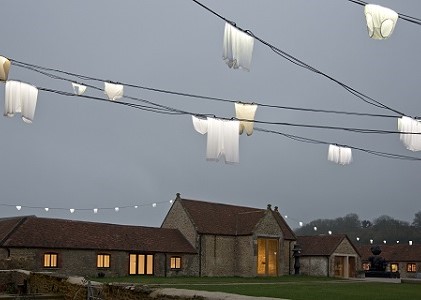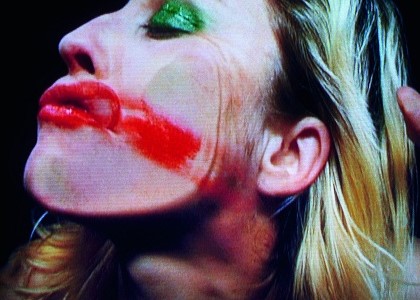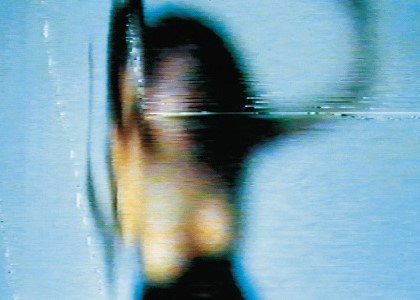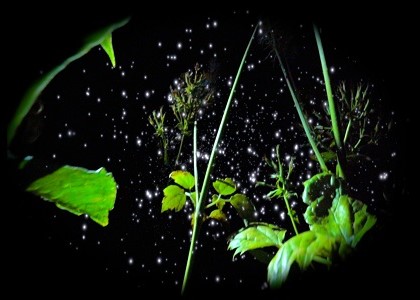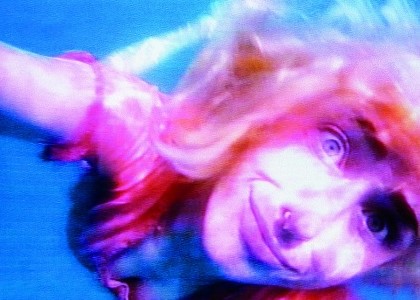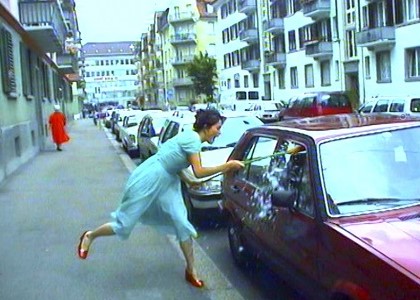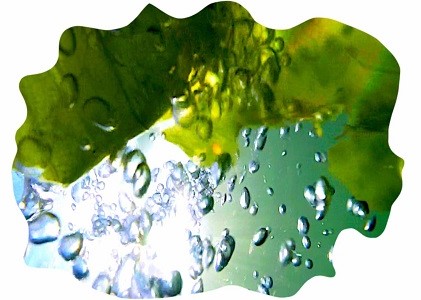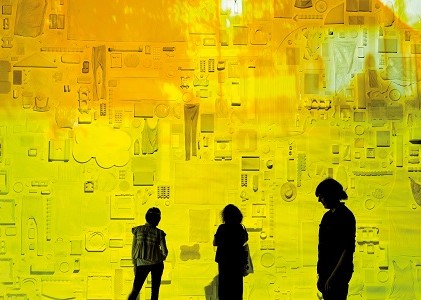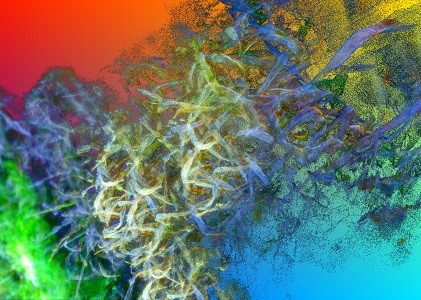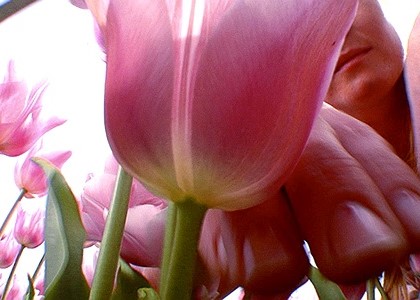Pipilotti List : Your Eye Is My Island Works in the Exhibition Pipilotti List : Your Eye Is My Island
1.
Hiplights(or Enlighted Hips)2011
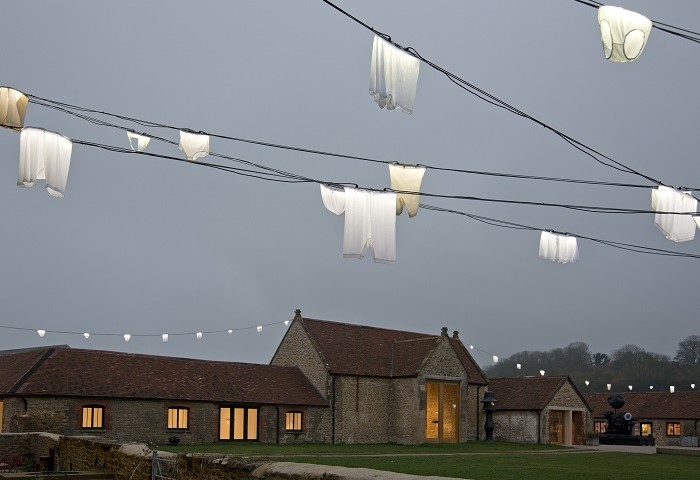
Installation view, Hauser & Wirth Somerset, Bruton, 2014 Photo: Ken Adlard
Hiplights (or Enlighted Hips) is an outdoor work featuring used (then washed) underwear of various types hung as if on a clothesline. It evokes the operations of the various organs in the groin area and the deeply private sensuality associated with them, while reminding the viewer that every one of us passed through this zone when we were born. Beholding the underwear suspended in space, one may feel something like shame in imagining something dense and gravitational filling it, and may hope that one day it will be released from the weight it carries.
2.
Open My Glade (Flatten)2000
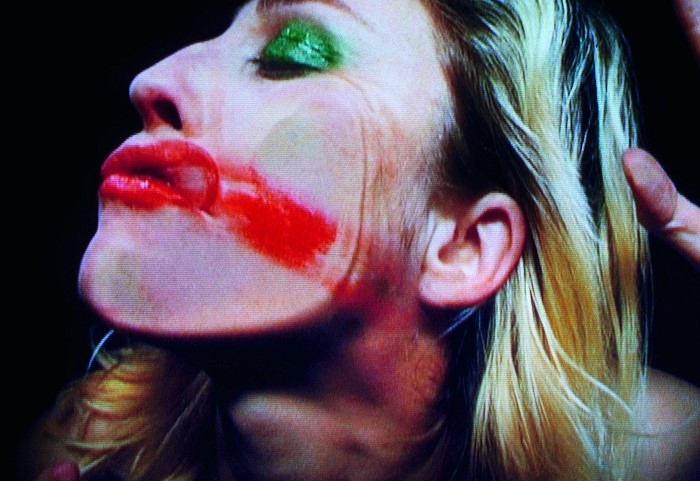
The face of a woman (Rist herself) is pushed up against the screen. The image of determined struggle against an invisible wall is reminiscent of social and organizational barriers based on gender and race, such as the so-called glass ceiling. Without a word, the blue eyes of the woman stare at the viewer, as if questioning: do you want to rescue the woman trapped inside the frame? Do you expect her to smash the glass with her own force and break through to your side? Or, does her earnestness make you laugh?
Lucy R. Lippard described the relationship between second-wave feminism and art in the 1970s: “Often accepted unconsciously, these [feminist] values support the opening up and out of eyes, mouths, minds, and doors – and sometimes the smashing of windows.” This surely applies to Rist, a member of a subsequent generation, as well.
3.
I’m Not The Girl Who Misses Much1986
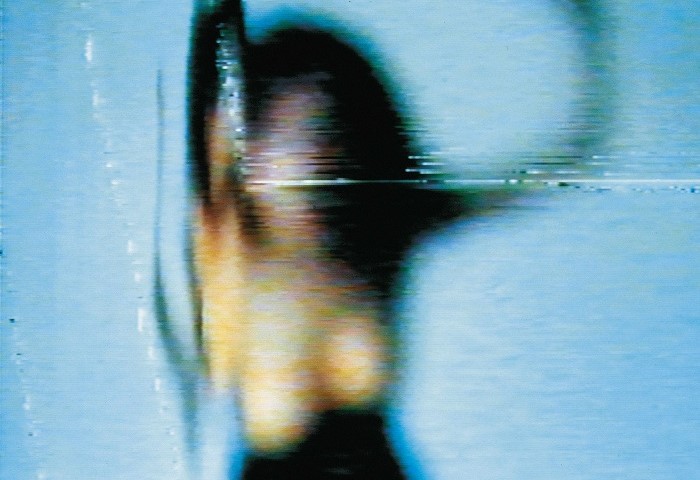
In Pipilotti Rist's early video works, many of them focus on the female body. Not unlike the music videos that spread rapidly in the 1980s, these works present a unique worldview in which music is fused with visual images.
In this video, the artist herself, clad in a black dress with her breasts bared, sings and dances hysterically. The title is taken from a line in the Lennon and McCartney song Happiness Is a Warm Gun. By changing the pronoun from “she” to “I,” Rist turns what was originally a male monologue into a female statement of intent. With her quickly changing and comical movements and high-pitched voice, Rist sets out to depict women as “strong people who can show their weaknesses.”
In 1986, Rist submitted this video to the Solothurn Film Festival in Switzerland. This made it possible for her to show more of her works at museums.
4.
Sleeping Pollen2014
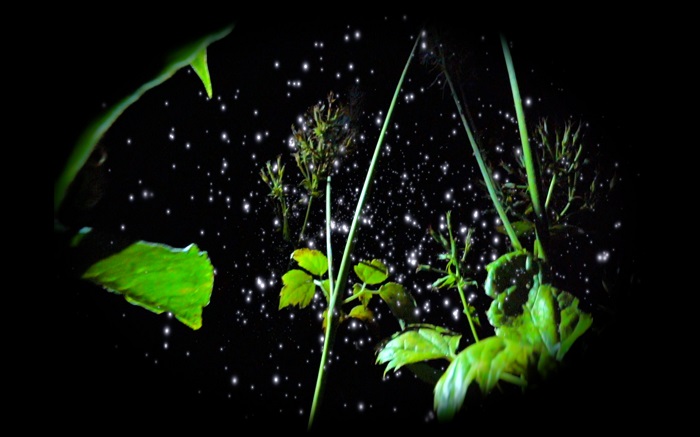
Several mirrored spheres hung from the ceiling at various heights project moving-images of plants onto the walls. The images of lush foliage, flowers, and points of light do not occupy a fixed position but float in space, drifting across other spheres and the bodies of viewers who walk between them. Pipilotti Rist speaks metaphorically of these silver spheres as “offering the winter plants an electronic bed in a dark cozy room,” and observes, “[t]heir dreams spin slowly in the air.”
The plants in this work were filmed at ZHAW Campus Grüental (GA) School of Life Sciences and Facility Management, and Rist describes what occurs at this life sciences research institute as “Just magic.” The activities of this facility, where technological advances and investigation of life’s phenomena unfold hand in hand with the secret life of plants, resonate with the artist’s consistent creative drive goal – “to take this cold, technical media and make it warm, to reject the divide between the organic and the mechanical” – and are a rich source of inspiration.
5.
Sip My Ocean1996
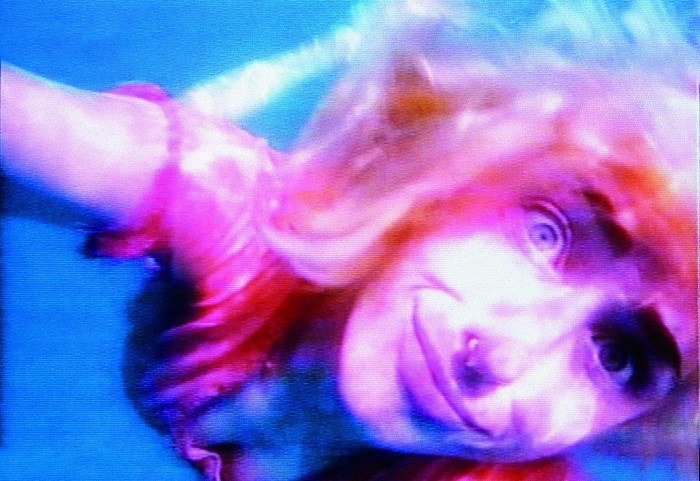
This piece was filmed with an underwater camera in the Red Sea, home to vividly colored coral reefs, in the Middle East. The serene, shimmering soundtrack is disrupted at intervals by hysterical screaming, hinting at madness lurking in paradise. According to Rist, the work deals with the state of tension when in love, fluctuating between longing and anxiety.
When this work was first shown in 1996, much attention was paid to its mode of presentation, with the film projected into a corner of the gallery. Rist employed an innovative approach that took the film outside the traditional frame and opened up a new frontier explored in subsequent video installations. In the context of feminism, one can point to this approach as setting the work apart from the stereotypical gaze directed at the female body as an object of desire. From the artist’s facial expressions, comical and hardly seductive, and the extreme closeup shots of the bust, there emerges a new kind of image of the feminine grounded in acceptance of bodily differences. The word “sip” in the title Sip My Ocean sounds similar to “ship.” Guided by Pipilotti Rist, swimming before us in a yellow bathing suit, we are beckoned to embark on a journey through a vast ocean full of freedom and excitement.
6.
Ever Is Over All1997
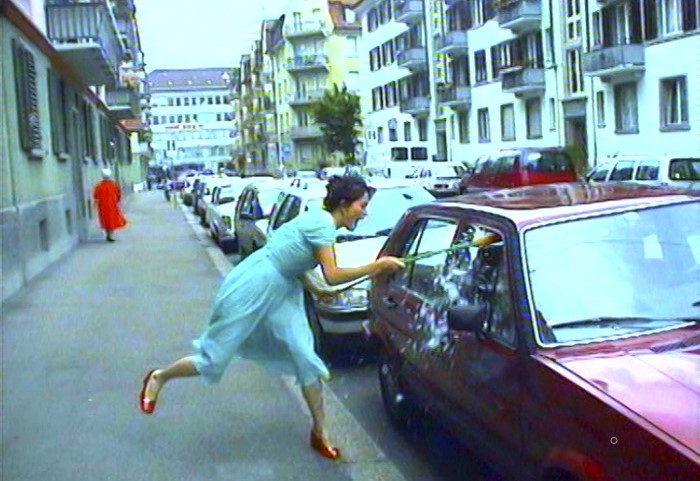
In a slow-motion video, a woman in a light blue dress and red shoes walks down a city sidewalk and gleefully smashes the windows of parked cars with a hammer in the shape of a large tropical flower known as a red-hot poker or torch lily. On another wall, multiple close-up moving images of the same type of red-orange flower are projected so as to partially overlap.
This video installation is one of Rist’s best-known pieces, first shown publicly at the 1997 Venice Biennale where it won the Premio 2000 award for emerging talents and subsequently recognized as a seminal work of feminist art. The protagonist of the video is a woman who destroys an automobile, a symbol of male-dominated, civilized society, with an implement in the shape of a wild flower. Because of the woman’s leisurely humming and open smile, the work was also described at the time of its release as presenting “relaxed feminism.”
7.
4th Floor To Mildness2016
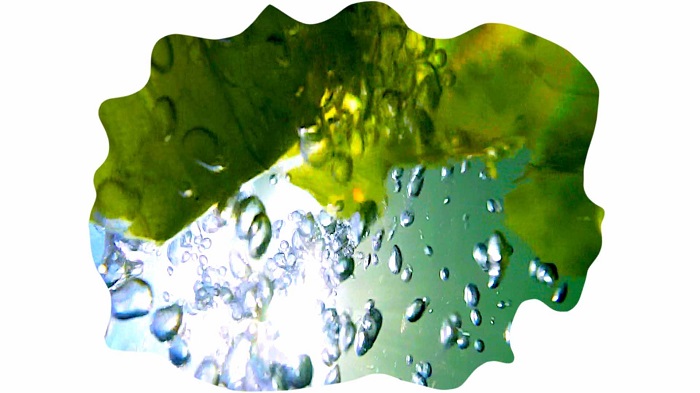
As the shooting location of this video installation, Rist chose the Old Rhine, which runs along the Austrian-Swiss border. When the artist dipped her camera into the river, she discovered a landscape that was “like Monet from the other side.” The work captures closeups of aquatic scenes that Rist had overlooked in the past, such as small air bubbles attached to the underside of a leaf, a variety of living creatures, light seeping through a hole in a worm-eaten leaf, mud, and algae. These fragmentary images are projected on a cloud-shaped screen suspended horizontally from the ceiling as visitors lie down on randomly positioned beds and look up at the work from below.
The muddy waters of the Rhine suggest a state in which opposing concepts such as melancholy and euphoria, and joy and sorrow are mixed together. And while your body struggles, it also attempts to ascend toward the light. The epic installation, which mildly affirms the act of living while embracing hardship, is, in Rist’s words, “a sad but hopeful work.”
8.
The Innocent Collection1985 - approx. 2032
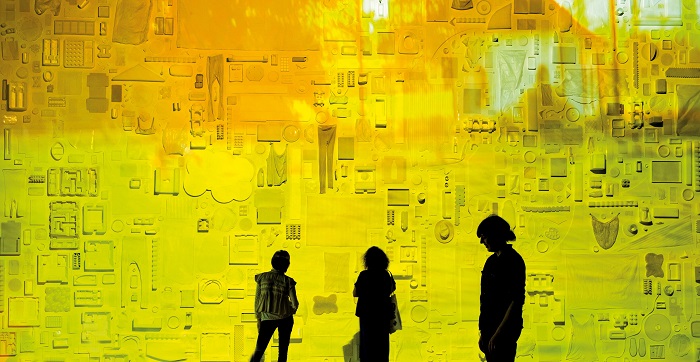
Installation view, Kunsthaus Zürich, 2016 Photo: Lena Huber
Since 1985, Pipilotti Rist has been collecting plain, unprinted translucent or white plastic and paper, wooden disposable items. She names Fluxus and Yoko Ono as the primary influence for her to start the collection. These amassed objects and materials, produced through ceaseless manufacturing processes, then stripped of their purpose and discarded they become part of the mass of garbage. Rist says she is soothed by the sight of these materials, which having outlived their original uses are returned to a state of innocence and reflect whatever light or images fall upon them.
Incorporating some of these disused items into her works as “instant diamonds,” Rist encourages us to open our eyes, hearts and minds to the seemingly familiar, multifaceted world around us, questioning anew what is purity and impurity, public and private, worthless and of value.
For this exhibition, the installation was realized with the materials donated by the public.
9.
Apollomat Wall2020-21
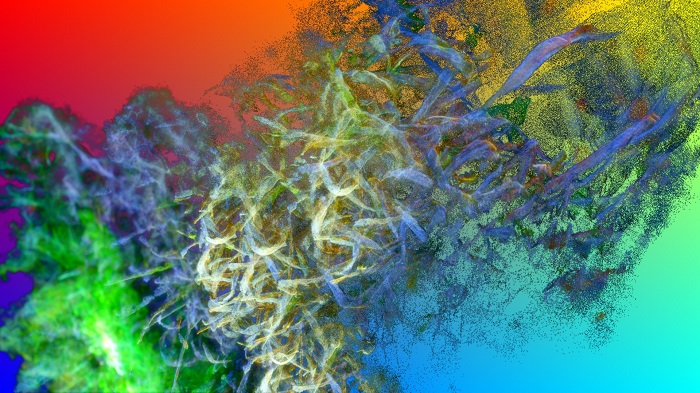
Apollomat Wall
The idea is that now we’ve explored the whole geographical world, pictures or films are the new, unexplored spaces into which we can escape.” The Apollomat series, emerging from Pipilotti Rist’s prophetic ideas, explores vivid, tactile expression through organic textures and images closely adjacent to nature and the human body.
Rist’s large-scale installations are conceived of as “spaces where a melting of knowledge and feelings occurs, creating a common thought or a giant speech bubble,” and often incorporate the movements of viewers as an element of equal importance to video and audio.
More than half a century after the dawn of video art, the advancement of optical technology has given artists the freedom to treat any surface as a screen. In particular, Rist’s projects in public spaces, including museums, take on a weightier significance in this era when the relationship between people and screens has become so private and intimate.
10.
Another Body (from the Lobe of the Lung Family)2008/15
Worry Will Vanish Relief (from the Worry Work Family)2014
Mercy Garden Retour Retour (from the Mercy Work Family)2014
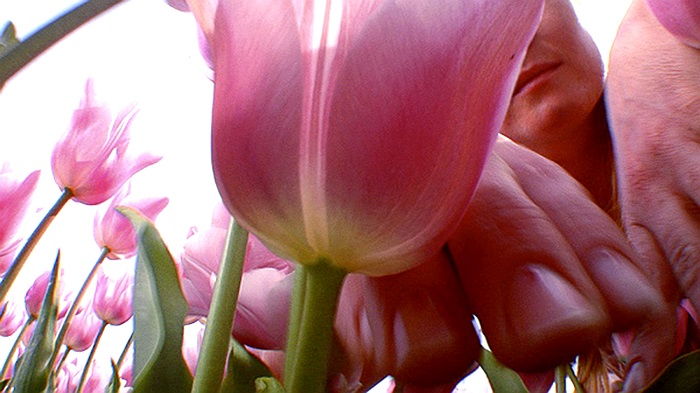
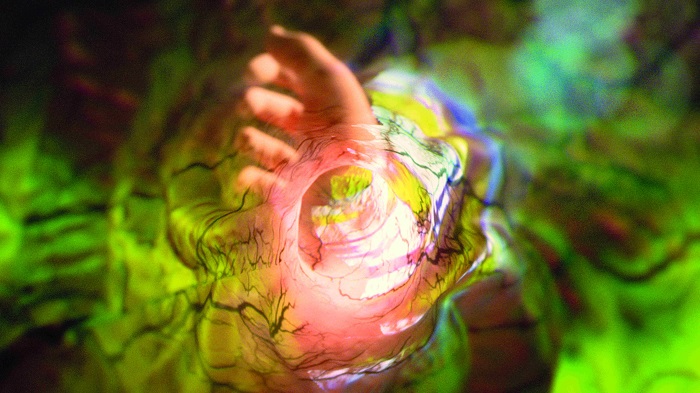
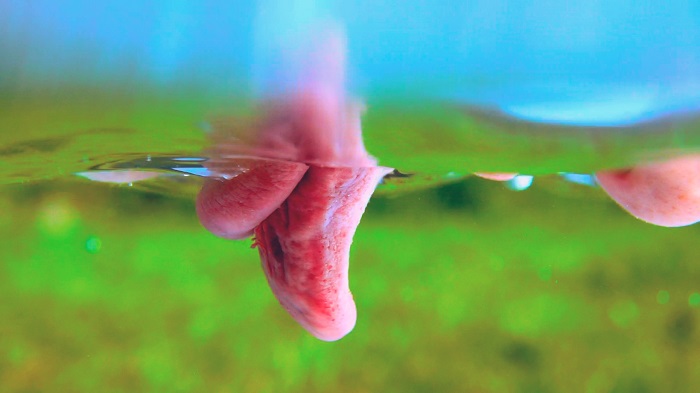
In these three video works, which all deal with the subject of human beings and their environment, Pipilotti Rist intermingles diverse images relating to the human body and the natural world. Another Body presents a dream world where we have not been expelled from the Garden of Eden, Worry Will Vanish Relief portrays the world inside and outside of the body permeating through the skin, Mercy Garden Retour Retour weaves together fragmented memories of human-environment interactions. Brimming with gentle and comforting images, the shifting of perspective in these works transforms a world of anthropocentrism into a world of connection woven by multi-species communities.
Informed by somatic psychology and self-hypnosis relaxation techniques, this installation beckons viewers into an experience of loosening the entire body, and surrendering themselves to the work. The space is perfectly aligned with Rist’s confident statement: “I’m totally fine with being a hippie. I am Pipi. And I’m not afraid of the idea that art can heal.”



